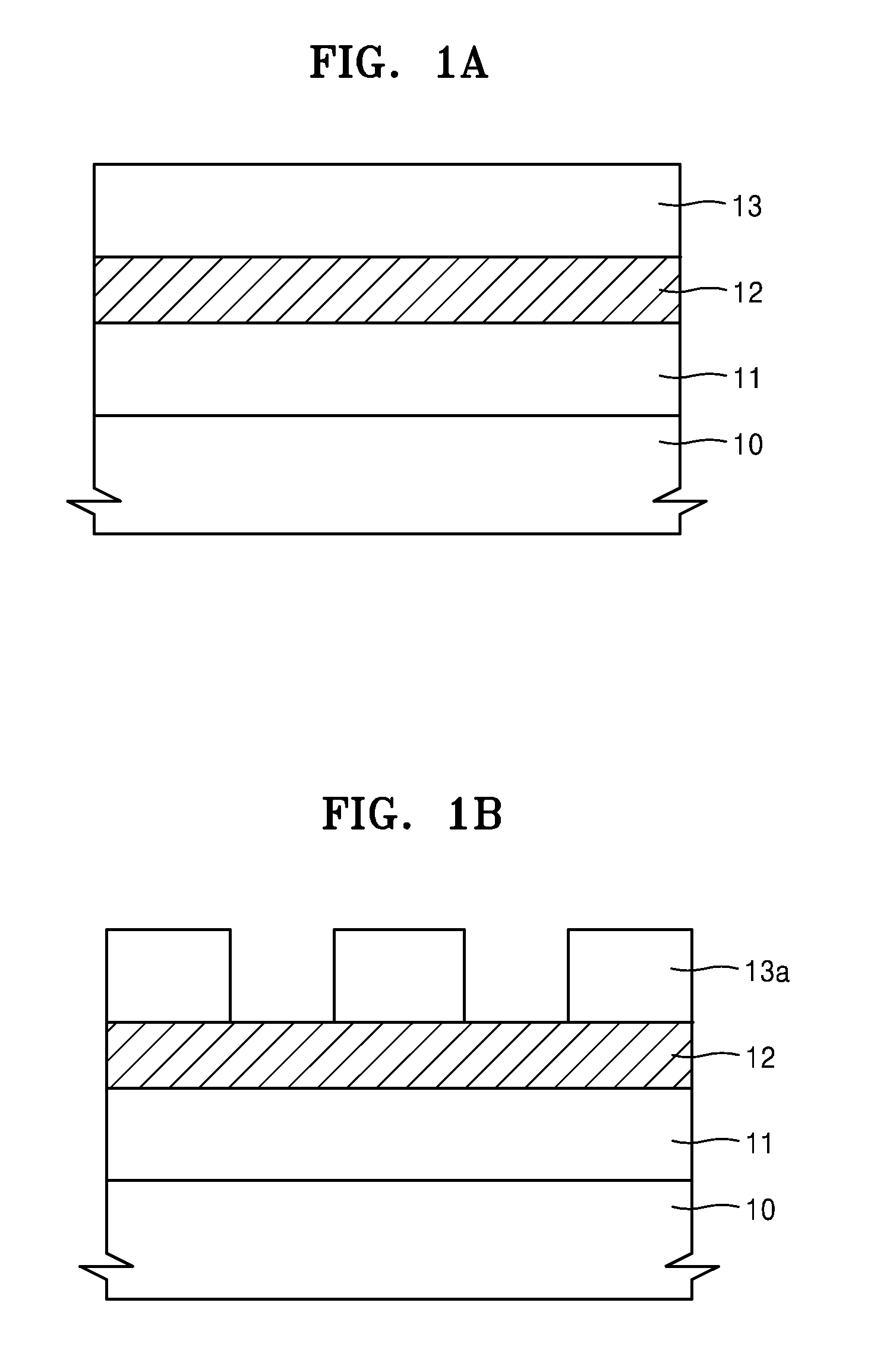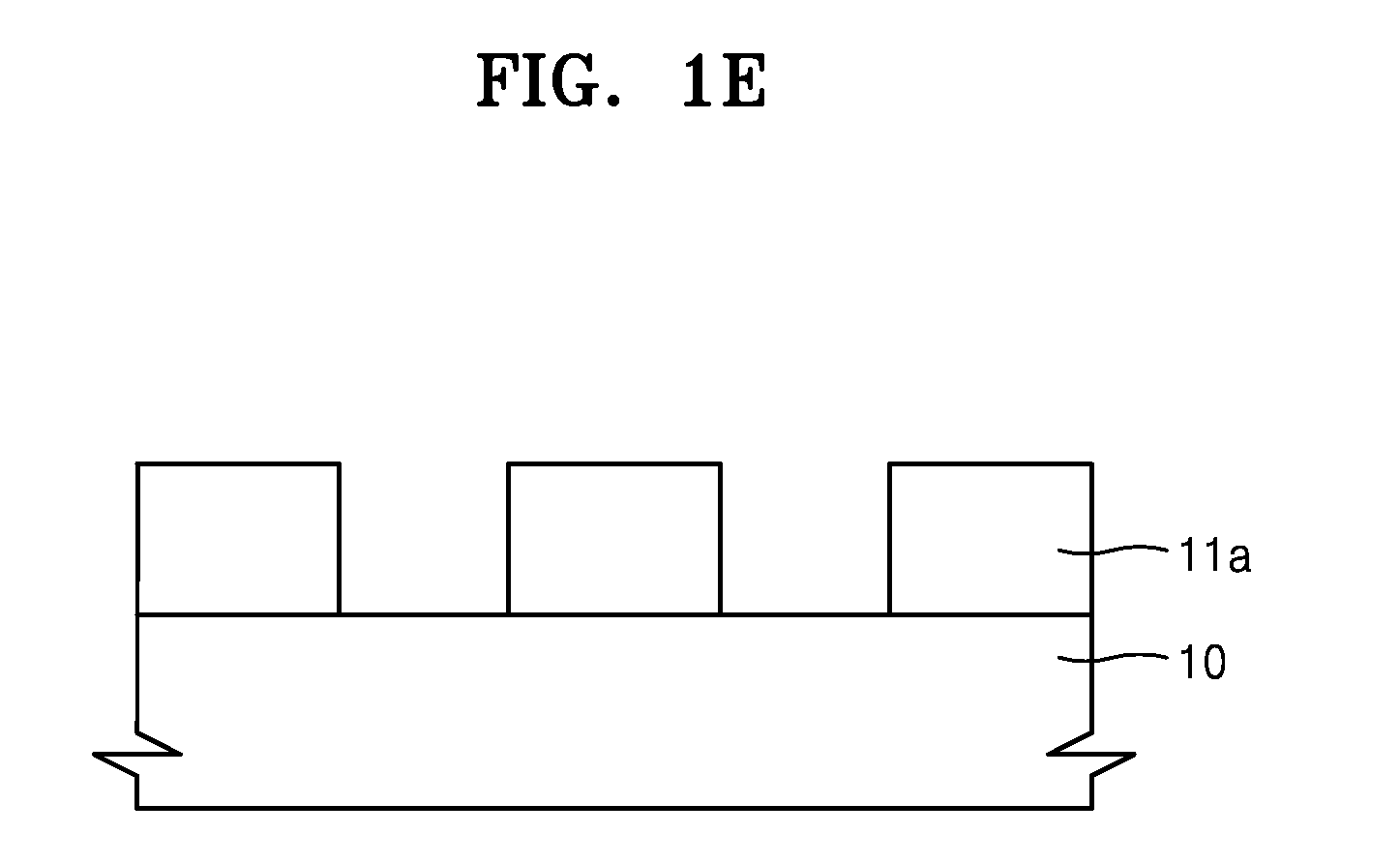Hardmask composition and method of forming pattern using the hardmask composition
a composition and composition technology, applied in the field of hardmask composition and composition method of forming pattern using the hardmask composition, can solve the problems of limited hardmask pattern, difficult to provide fine pattern having a desirable profile by only the typical lithographic technique described above, and deterioration of electrical characteristics of the device, so as to achieve the effect of improving etching resistan
- Summary
- Abstract
- Description
- Claims
- Application Information
AI Technical Summary
Problems solved by technology
Method used
Image
Examples
preparation example 1
Preparation of Graphene Nanoparticle
[0174]20 mg of graphite (available from Aldrich) and 100 mg of potassium sodium tartrate were added to an autoclave vessel, and the mixture was allowed to react at a temperature of 250° C. for about 60 minutes.
[0175]When the reaction was completed, the resultant was centrifuged using a filter (8,000 and 10,000 NMWL, available from Amicon Ultra-15) to select a particle size, and this underwent dialysis to remove residues. Then the resultant was dried to obtain a spherical graphene nanoparticle having a particle diameter of about 10 nm.
preparation example 2
Preparation of Graphene Nanoparticle
[0176]20 mg of graphite (available from Alfa Aesar) was dissolved in 100 ml of a concentrated sulfuric acid, and the mixture was sonicated for about 1 hour. 1 g of KMnO4 was added thereto, and a temperature of the reaction mixture was controlled to be about 25° C. or lower.
[0177]At room temperature, the resultant was refluxed for 10 minutes by applying a microwave (power: about 600 W) thereto. The reaction mixture was cooled so that a temperature of the reaction mixture was about 25° C., and then 700 ml of deionized water was added to the reaction mixture to dilute the reaction mixture. Next, a sodium hydroxide was added to the reaction mixture in an ice bath so that pH of the reaction mixture was controlled to about 7.
[0178]The reaction mixture was filtered through a porous membrane having a pore diameter of about 200 nm to separate and remove graphene having a large size. Residues in the filtrate thus obtained was removed by performing dialysis,...
preparation example 3
Preparation of Graphene Nanoparticle to which Hydroxyl Group (OH) is Bonded
[0179]160 ml of nitric acid was added to 2 g of pyrene, and the mixture was refluxed at a temperature of about 80° C. for about 12 hours to obtain a reaction mixture containing 1,3,6-trinitropyrene. The reaction mixture was cooled to room temperature, and 1 L of deionized water and water were added thereto to dilute the reaction mixture, and this was filtered through a fine porous film having a pore diameter of about 0.22 μm.
[0180]1.0 g of 1,3,6-trinitropyrene obtained after the filtration was dispersed in 0.6 L of 0.2 M NaOH aqueous solution, and ultrasonic waves (500 W, 40 kHz) was then applied thereto for about 2 hours to obtain a suspension. The suspension thus obtained was placed in an autoclave vessel and was allowed to react at a temperature of about 200° C. for about 10 hours. The resultant was cooled to room temperature and filtered through a fine porous film having a pore diameter of about 0.22 μM t...
PUM
| Property | Measurement | Unit |
|---|---|---|
| size | aaaaa | aaaaa |
| size | aaaaa | aaaaa |
| thickness | aaaaa | aaaaa |
Abstract
Description
Claims
Application Information
 Login to View More
Login to View More - R&D
- Intellectual Property
- Life Sciences
- Materials
- Tech Scout
- Unparalleled Data Quality
- Higher Quality Content
- 60% Fewer Hallucinations
Browse by: Latest US Patents, China's latest patents, Technical Efficacy Thesaurus, Application Domain, Technology Topic, Popular Technical Reports.
© 2025 PatSnap. All rights reserved.Legal|Privacy policy|Modern Slavery Act Transparency Statement|Sitemap|About US| Contact US: help@patsnap.com



